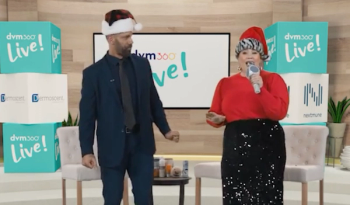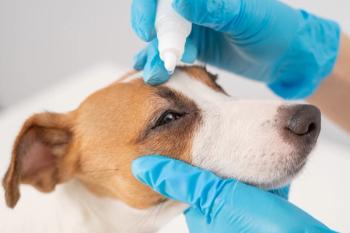
The 3-Tiered Approach of Treating Heatstroke in Dogs
Forecasters are predicting an exceptionally hot summer for those living out west and near or slightly above average temperatures for the Midwest and Northeast. This means pet owners should be on high alert when spending time outside with their pets, and veterinarians should be ready for an increased caseload. Do you know the 3-tiered approach to treating heatstroke?
With Mother Nature turning up the heat, we’re not the only ones breaking a sweat this summer. Pets everywhere are feeling the heat, too. That means veterinarians need to be prepared for an increased number of heatstroke cases this summer.
The term heatstroke is used quite a bit in veterinary medicine, but what is it really? Generally speaking, a dog whose core body temperature rises above 105.8°F and is experiencing some sort of central nervous system dysfunction—staggering, not quite responsive, altered in mental status—is suffering from heatstroke.
RELATED:
- Safe Travels: Minimizing Transport-Related Behavioral Problems in Horses
- AVMA 2017: How to Deal With Animal Neglect Cases
But what do you do when a heatstroke case walks into your veterinary clinic? According to Daniel Edge, DVM, MBA, director of veterinary specialty operations for Zoetis Petcare, there is a 3-tiered approach to handling heatstroke.
1. Controlled Cooling
Owners who notice signs of heatstroke in their pet should immediately begin the cooling process; and that process continues at your practice.
You want to cool the patient slowly until the rectal temperature reaches approximately 103.5°F. “You need to stop at that point because if you continue to actively cool them, you may actually overshoot it and make the patient hypothermic,” Dr. Edge said.
Use lukewarm water, soak towels in the water and squeeze the water out and drip it over the patient, and put a cool fan in front of them. Dr. Edge warns practitioners to avoid ice packs and very cold water, which can cause peripheral vasoconstriction and lead to secondary complications.
2. Volume Replacement
Next comes volume replacement for optimized perfusion. “These dogs are likely dehydrated,” Dr. Edge said, “and you need to account for that since they’re already under high cardiovascular stress due to the heatstroke.”
Administer a crystalloid solution in 20 mL/kg boluses every 15 minutes until you begin to see improvement, which can be measured by looking at the patient’s mucous membranes and capillary refill time.
3. Managing Secondary Complications
Last but certainly not least, you need to be ready for secondary complications that may result from heatstroke. Dr. Edge said organ injury/failure is the most likely secondary complication practitioners will see in these patients.
For example, the patient could experience systemic inflammatory response syndrome (SIRS) stemming from poor perfusion if it is overheated and its blood vessels are constricting. “When they have SIRS, we’re already talking about an intensive care unit,” Dr. Edge noted.
There’s also the potential for disseminated intravascular coagulation, which is microclotting that can occur throughout the bloodstream, he added.
Mortality in Heatstroke
“The prognosis for these pets is guarded,” Dr. Edge said. “These dogs can have mortality rates of up to 50%.”
There is increased risk for death in veterinary patients with heatstroke that also have hypoglycemia, those with elevated renal values, and dogs that present more than 90 minutes after the first critical signs are noted.
If death is going to occur from heatstroke, Dr. Edge said, it will most likely occur within the first 24 hours of becoming overheated. Dogs that make it past those 24 hours will still have a long recovery period ahead of them, though. Get ready for a lot of work focusing on those secondary complications, Dr. Edge advised, because they are not easy to address.
Newsletter
From exam room tips to practice management insights, get trusted veterinary news delivered straight to your inbox—subscribe to dvm360.




